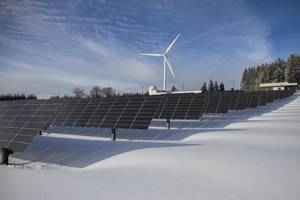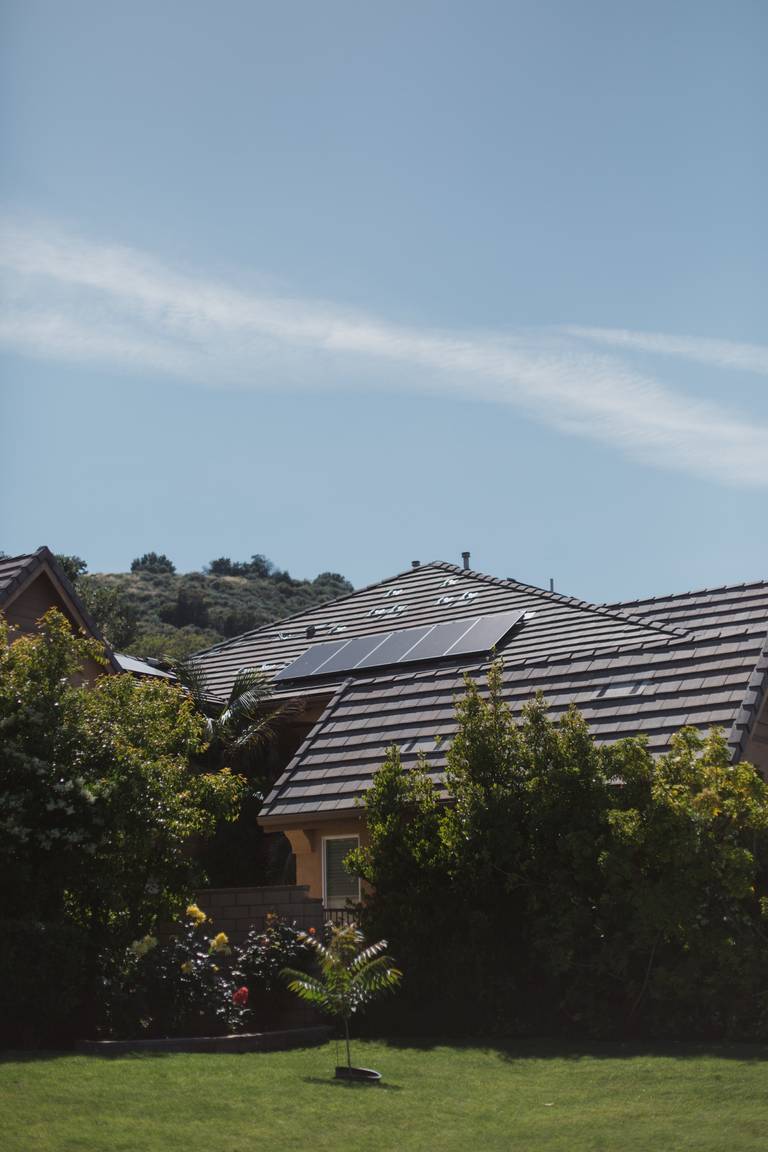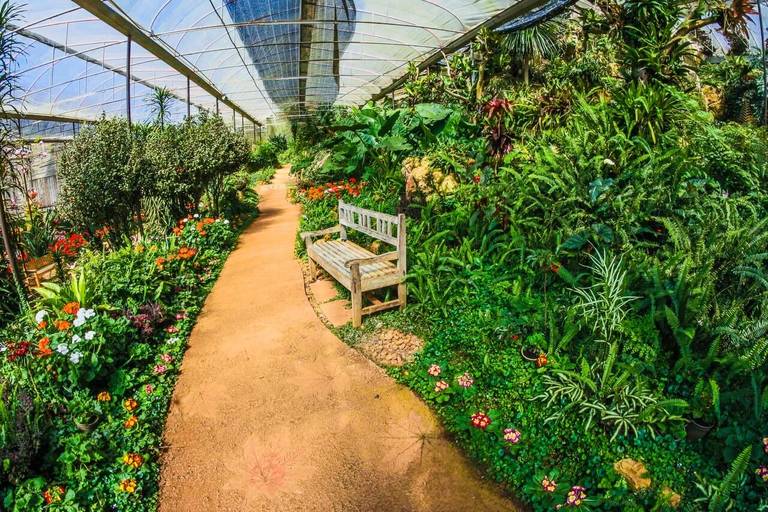Greenhouse Subterranean Heating and Cooling System Explained
Today you're going to learn about the SHCS - short for Subterranean Heating and Cooling System, also called "the Climate Battery".
It is an innovative approach to optimized solar greenhouse heating and cooling design that uses the magic of phase-change for heat exchange.
This proven system can heat your greenhouse for operating costs for as little as 7 cents per square foot per year. Like I've done in sunny Colorado Ag Zone 4.
The best part?
With this technique, supplementary heating and fan cooling costs are often entirely eliminated!
Subterranean Heating and Cooling System Explained
Using research from Canadian government studies, Jerome Osentowski of the Colorado Rocky Mountain Permaculture Institute was among the first to use this approach.
Since the SHCS revolution began, the system has gained in popularity and efficiency. The initial "proof of concept" only requires a floor plan of the greenhouse.
The approximate material cost for an entire system is only about $1/sq/ft of the greenhouse. You can lower that to as low as 50 cents if you have fans, thermostats, and barrels on hand.
Do-it-yourself is the best way to go. howtogosolar.org is dedicated to setting the course straight for the solar greenhouse grower interested in optimum yields with the absolute minimum operating inputs and system expense.
Phase Change - The Physics Behind the System
What drives the SHCS is the magic of phase change - from liquid to vapor and back again. The system is moving heat from one place to another, functioning as a simple refrigeration system.
A typical 1200 square foot greenhouse needs only a single large household refrigerator's equivalent equipment and running costs!
The SHCS design forces the vapor to condense by slowly circulating all of the moist, hot daytime greenhouse air underground, where it is always cooler than the greenhouse air.
By doing so, the solar and the chemical heat (from the plant photosynthesis) required to evaporate the moisture in the first place are forced into the soil.
Thus, the "magic" actually lies in the potential to harness five times the energy compared to conventional greenhouse solar heating that is cluttering up your precious greenhouse floor space.
All this is achieved by simply inducing temperature change over the phase change barrier.
And by inducing this "dewpoint" condition in the greenhouse soil, the plant roots are constantly being bathed in warm, moist conditions - the perfect balance for plants and solar greenhouses.
The space gets heated by the massive amount of radiating solar heat stored in the soil under the greenhouse! The physics behind this effect is fully explained here.
As well, the Chinese have done one in-depth analysis of the SHCS principle. This document explains their approach, contains ALL of the physics formulas for EVERY heat exchange occurring, under or above ground, and all of their food production payback figures.
If you need a better rendering of the math and calculus figures and symbols in their analysis, download and view the original MS Word Document here instead.
Heating Storage
A small fan is activated by a thermostat set about 20 F deg. higher than the soil temperature (in the 75 deg. F - 80 deg. F range.) The fan comes on as the sun heats the space, and the solar-heated air is moved underground.
The entire volume of the space moves underground a minimum of 5 times every hour. The soil is so much cooler than the air. Because of that, regular heat transfer AND dewpoint conditions created underground cause the hot moist air of the greenhouse to give up some of its daytime heat AND moisture into the subsoil of the greenhouse.
As a result, the air goes underground through the tubing system, hot and moist, and exists right back into the greenhouse cooler and dryer. To be cost-effective, each cubic foot of air in the greenhouse makes this route past the plants and then through the soil at least five times an hour.
Daytime Cooling
Through regular heat conduction and by inducing a phase change while it is underground, the air returning back into the greenhouse is cooler (usually a 30 degree F. drop!).
Some of the vapor has condensed out into the subsoil. Being dryer, it can absorb more moisture and so evaporatively cools the space once again, returning back underground to continue releasing and storing heat and moisture, and then returning to continue the cooling effect at least every 12 minutes.
Some Colorado greenhouses don't even need cooling fans with this system in place! The first system I built here was regularly cooler inside in the midday, midsummer heat than it was outside.
We were amazed to walk from 105 degree F blasting Colorado summer heat into a "cool" 95 degree F greenhouse. All that with NO exhaust fans - just the little SHCS fan humming along in the background! Passive ventilation is all that is usually needed, ending dependence on fresh air fans.
Night Time-Space Heating
By putting the sun's excess energy underground each day, the warm soil means that only the above-ground air chills enough to require heat input at night.
We take the chill off with the same fan used to store the excess heat during the day. In this case, though, the second thermostat turns the fan on when the air temperatures drop enough to approach the low limit you set.
By circulating the now cool air back underground and then back into the space, the air extracts heat from the soil warmed that day and returns as warm air. This is exactly the opposite of the heat storage cycle, but using the same fan and one more separate night heating thermostat.
Some Colorado greenhouses can easily maintain a Mediterranean environment all year without any additional heat required. Yes, even figs can be grown in AG Zone 4 with no problems with the cold.
Equipment and Materials
For the SHCS project, you will need the following:
- Several hundred feet of thin-walled 4" corrugated, perforated, flexible polyethylene drainage tubing (commonly called ADS -Advanced Drainage System) You will need approximately six linear foot of ADS for every 4 square feet of greenhouse space. It would be best to lay out enough separate tubes to result in all the greenhouse air moving underground at least five times an hour. You do not move the air through one long tube but through many short ones!
- Some 55-gallon plastic drums and 12" to 18" plastic ADS culverts to plug all the tubes into. One for each fan and one for each exhaust location. The culverts are optional; you can plug all the tubes into the barrels if the installation scenario permits. Each tube should be the same length to divide the amount of air that each gets evenly, and culvert plenums accomplish this the best.
- A jigsaw or 3/8" shank flycutter and hand drill to cut the holes in the barrels and culverts to accept the tubes. You don't need perfect holes... it's all buried after all... so the hole and tubing fit need only be dirt tight, so you don't get too much falling into the tubing. You can patch up the gaping mistakes with plastic stuffing if you have to, and then backfill.
- at least a 6" wide trencher to install the tubing into trenches if you have trenchable soil, otherwise an excavator contractor to install the tubing by removing the subsoil and then backfilling one layer of tubing at a time. Not all contractors are the same, so make sure they are aware of the issues. Show them this video to get the idea across clearly.
- One inline fan for every 1200 square feet of greenhouse. Check Grainger.com for inline fans 6" to 14" - see what they look like. The fans should be sized to move all the air in the greenhouse underground at least five times per hour. The minimum Cubic Feet per Minute (cfm) your fan must move is determined by calculating the entire volume of the greenhouse (basically length x width x height or go here for a free calculator link) and dividing that number by 12.
- Two 30-100 deg F adjustable remote sensing heating/cooling line voltage thermostats
- A tubing plan you can build from. It must be complete with an electrical schematic, typical blower plenum diagram, and fan sizing schedule to suit the greenhouse size and layout.



